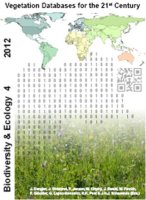Biodiversity & Ecology
Research Article Open Access
Floristic classification of the vegetation in small wetlands of Kenya and Tanzania
Keywords: flood plain; inland valley; land use; modified TWINSPAN; papyrus swamp.
 English English
Abstract: Small wetlands in East Africa are increasingly converted into sites for agricultural production. The resulting changes in land use and cropping systems will impact on the wetlands’ vegetation. We characterized the plant communities in four wetlands of Kenya and Tanzania, each comprising four types of land use differentiated by the degree of anthropogenic disturbance (cropland, fallow, grazing land and unused). Since no syntaxonomical scheme was available as a reference, a first classification of vegetation units and the identification of diagnostic species is proposed. We collected 207 relevés in the representative wetlands in relation to the current land uses. The plant communities were determined using a modified TWINSPAN classification. For each vegetation unit, diagnostic species were selected according to their fidelity index (phi coefficient). Floristic relationships between vegetation units were surveyed by nMDS ordination analyses. We identified 15 plant communities and selected 147 diagnostic species. The communities were differentiated into (1) semi-natural wetland vegetation (associated with less disturbed environments), (2) grassland and fallow vegetation, and (3) weed communities (associated with eu-hemerobic, drained and cultivated cropland). While the semi-natural vegetation was distinctly matched with unused fields, the differential matching of the other plant communities with land use types was less clear. According to the floristic similarity, the weed communities associated with cropland tended to be aggregated in the nMDS configuration while the semi-natural vegetation was dispersed. The results of the ordination did not differ when involving all species or only the selected diagnostic ones. As the plant communities described are rankless syntaxa, the establishment of a comprehensive syntaxonomic classification for African wetlands will require further vegetation surveys as well as their comparison with published data.
Suggested citation:
Alvarez, M., Becker, M., Böhme, B., Handa, C., Josko, M., Kamiri, H.W., Langensiepen, M., Menz, G., Misana, S., Mogha, N.G., Möseler, B.M., Mwita, E.J., Oyieke, H.A., Sakané, N. (2012): Floristic classification of the vegetation in small wetlands of Kenya and Tanzania. – In: Dengler, J., Oldeland, J., Jansen, F., Chytrý, M., Ewald, J., Finckh, M., Glöckler, F., Lopez-Gonzalez, G., Peet, R.K., Schaminée, J.H.J. [Eds.]: Vegetation databases for the 21st century. – Biodiversity & Ecology 4: 63–76. DOI: 10.7809/b-e.00060.
|


